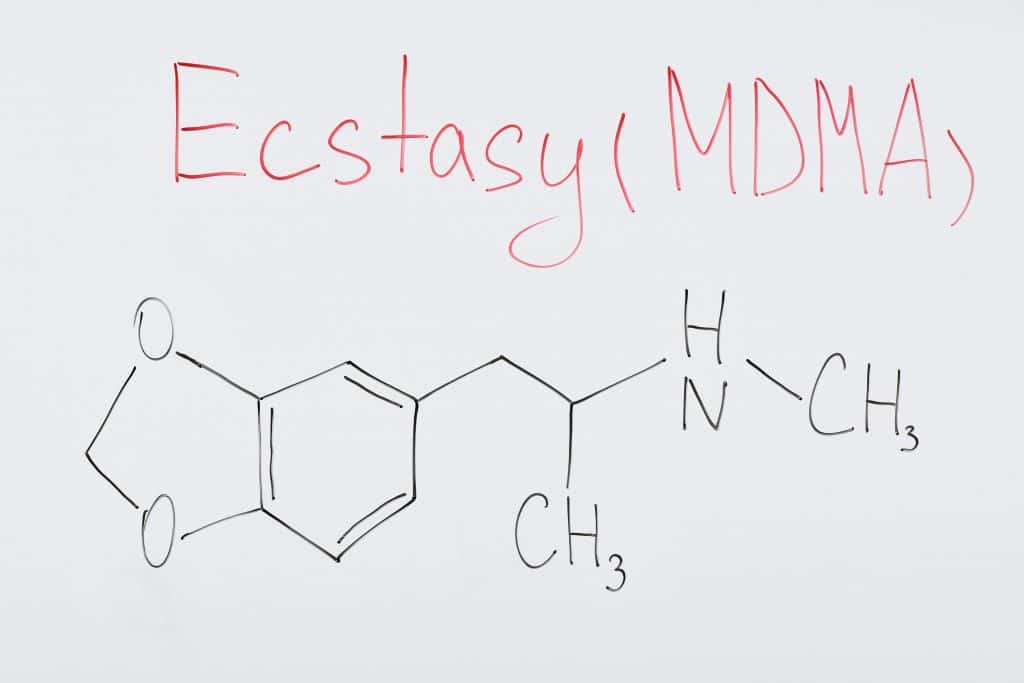The name Alexander Shulgin is recognizable in the world of psychedelics. As a cutting-edge researcher in the mid-to-late 1900’s, he has the designation of bringing MDMA to psychotherapy. But it wasn’t just the man alone who made great strides in this world; his wife was right beside him. Ann Shulgin was a woman before her time, and her contributions to the world of psychedelics understanding are in tandem with her husband’s. For this year’s Women’s History Month, let’s pay some attention to this pioneer of psychedelic therapy.
First, a little on hubby Alexander Shulgin
Truth is, the name Ann Shulgin wouldn’t be known if not for her more famous husband, Alexander Shulgin; who is credited as a chemist, pharmacologist, psychopharmacologist, and author. His own experiences with psychedelics including mescaline, led him in the direction of psychopharmacology. Though he started out at Harvard at the tender age of 16, he dropped out to join the navy, and returned to the University of California where he earned a PhD in biochemistry, and did post-doctoral work in psychiatry and pharmacology.
When working for the Dow Chemical company in the early 60’s, he developed the first ever biodegradable pesticide called Zectran. This earned him both money, and the ability to further his own research interests, while still working at Dow. He created and patented drugs for Dow, and in his spare time, he wrote articles for publication in journals about other drugs.
Following this he studied neurology at UC San Francisco’s medical school, but left for his own consulting work. He built a lab at home dubbed ‘the Farm’, where he worked as a consultant, and was also an instructor at universities, and the San Francisco General Hospital. He made a connection with the DEA through a friend, and held seminars on pharmacology for the workers there; even giving the organization new drugs. He received awards from the agency upon publication of a reference book for law enforcement on controlled substances.
Hello, cool that you’re here. Sign yourself up to the Cannadelics Weekly Newsletter for email updates; and for a range of promos on cannabis flowers, vapes & smoking devices, edibles, cannabinoid compounds (delta-8, HHC), amanita mushroom products, and too much more to name. Come, find your favorite way of feeling good!
Shulgin then got a DEA Schedule I license to run an analytical laboratory, which enabled him to work with Schedule I psychoactive compounds; and to synthesize any new drug. In 1976 Shulgin did what he is most known for, found a new way to synthesize the drug MDMA, which had already been synthesized back in 1912 by pharma company Merck.
He passed it on to psychotherapist friends, who began using it in their practices. Particularly psychologist Leo Zeff, who subsequently passed on the drug to many other therapists. One was Ann Gotlieb, a lay therapist (basically, a therapist without formal training), who went on to become Ann Shulgin upon her marriage to Alexander in 1981 (they met in 1978).
Prior to re-synthesizing MDMA, Shulgin worked with friends to create a rating scale for ranking and describing the effects of different drugs; mainly done through self-experimentation of the group. Through this they established the Shulgin Rating Scale, which enabled descriptions for the visual, auditory and physical sensations that came with different compounds. Much of this work centered on phenethylamines, which include MDMA and mescaline; and tryptamines including DMT and psilocybin from magic mushrooms. One of the more popular drugs he invented, is 2C-B.
Despite his previous relationship with the DEA, in 1994 his lab was raided, and he was made to turn over his license due to allegations of violating it. This came with $25,000 in fines for having samples meant for quality testing. The raid came two years after he published the book PiHKAL (Phenethylamines I’ve Known and Loved) which the DEA stated acted like a recipe book for illicit drug manufacture.
Ann Shulgin – The woman behind the man
Alexander Shulgin is a well known name, and for good reason. He accomplished so much in his lifetime, and contributed so much to our understanding. Some of which he’s only getting credit for now, as laws against psychedelics loosen all over the place. But much of it, he didn’t do alone, and his wife Ann Shulgin played a strong role in everything that went on from the late 70’s and onward.
Ann was not trained like Alexander with tons of science degrees. Instead she started out as an artist. She worked as a lay therapist, and also used drugs like MDMA and 2C-B, when the drugs were still legally available for therapeutic use. She worked as a writer, documenting in detail the drugs, often from a Jungian perspective of psychoanalysis. She also spoke about their concomitant use with hypnotherapy. She was a speaker on these subjects, and was a strong supporter for the use of psychedelic medications.
She was also a co-author for the previously mentioned book PiHKAL which was a positive and negative in her husband’s career, as well as a similar book called TiHKAL (Tryptamines I have Known and Loved), which was published after. She helped her husband with the Shulgin Rating Scale too, and made contributions to the following books:
“Thanatos to Eros: 35 Years of Psychedelic Exploration; Entheogens and the Future of Religion; Ecstasy: The Complete Guide; The Secret Chief Revealed; Higher Wisdom: Eminent Elders Explore the Continuing Impact of Psychedelics; and Manifesting Minds: A Review of Psychedelics in Science, Medicine, Sex, and Spirituality.”
Of her relationship with her husband, she once stated in a 2014 article in the Associated Press: “He was the scientist, and I was the psychologist. He was a genius.” Of her, her daughter Wendy Tucker explained, “She was always the one who people talk to and you always felt like you could open up to her. She called herself a lay therapist.”
Of her own first experiences with psychedelics in her 20’s, Ann wrote this in PiHKAL: “I saw something forming in the air, slightly above the level of my head. I thought that it was perhaps a few feet from me, then I realized I couldn’t actually locate it in space at all. It was a moving spiral opening, up there in the cool air, and I knew it was a doorway to the other side of existence, that I could step through it if I wished to be finished with this particular life I was living, and that there was nothing threatening or menacing about it; in fact, it was completely friendly.
I also knew that I had no intention of stepping through it because there was still a great deal I wanted to do in my life, and I intended to live long enough to get it all done. The lovely spiral door didn’t beckon; it was just matter-of-factly there.”
Other accomplishments
It wasn’t always easy to publish their works, so in a determined way, the couple began their own publishing company in 1991 under the name Transform Press. This was how they published PiHKAL: A Chemical Love Story. After the DEA raid, they both decided to stay away from already banned drugs, and focused more on new compounds. This spawned the subsequent book TiHKAL: The Continuation in 1997.

One of the interesting things about Ann, was her lack of university education, but mastery of psychological concepts. A ‘lay therapist’ means she had no formal training, but was able to successfully work in the field regardless. One of her frequently spoken about subjects of interest, was the belief in our ‘shadow’ selves; the frightening parts of ourselves within, which are often subconscious or repressed.
Her view was that MDMA and similar drugs could help people with self-love and self-acceptance. In her words, “The magic of MDMA is that it allows you to see who you are without self-rejection. It gives you insight into yourself and is especially good for PTSD.” Her views on MDMA and PTSD have expanded out over the years, and have helped drive legalization measures. Including Colorado’s recent pre-emptive legalization of the drug, partly based on testimony from soldiers with PTSD.
Said tucker of this: “They were the ones pushing to do all the PTSD work with veterans with MDMA because they saw people who had severe trauma could really break through. They were so brave to publish their work because that really opened the door and paved the way to all that is happening now.” She added, “We lost years and years of research ability because of the attitude and fears around psychedelics. But we wouldn’t be where we are if it wasn’t for Ann and Sasha.”
She was also a strong supporter of MDMA’s use in couple’s therapy, saying its a great and useful tool to support communication and to get through relationship issues. Besides her use of shadow integration, she was known for promoting the spiritual aspect of the drug, and how it brings on feelings of unity and the divine nature of the world around. As a note, both Alexander and Ann fully supported use of drugs like MDMA in this way, but were 100% against their use as recreational drugs.
Conclusion
A decade ago, the work of Alexander and Ann Shulgin was still rather suppressed. These days, as psychedelics and their medical values get more attention, so do the Shulgins. Much of what we know today comes from their groundbreaking research; and even now we’re only just re-finding, what they discovered years ago.
Ann Shulgin is a role-model not only for the work she did, but in being one of the first female pioneers of such drug topics. We thank both Shulgins for there incredible work, which was done even under the stress and pressure of government resistance.
Welcome readers! Thanks for being a part of Cannadelics.com; where we work hard to bring you independent and comprehensive coverage of the cannabis and psychedelics spaces. Head our way frequently to keep informed on important stories; and subscribe to our Cannadelics Weekly Newsletter, so you’re never late to get the news.





